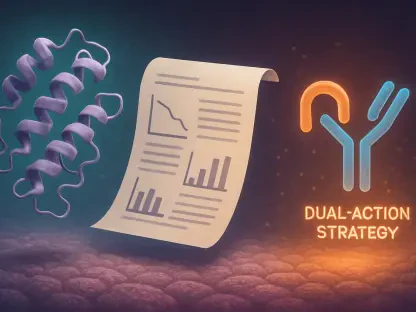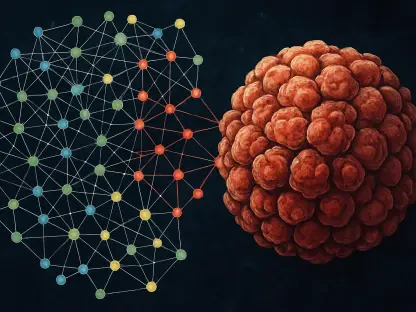In the ever-evolving landscape of biotechnology and pharmaceuticals, Ivan Kairatov stands as a respected authority, particularly in tech and innovation within the biopharma sector. He joins us today to discuss recent developments concerning a compound known as inidascamine. Originally developed by Recognify Life Sciences, a company with strong ties to Atai Life Sciences, this drug has recently gone through clinical trials aimed at treating cognitive impairments linked to schizophrenia. Despite encountering challenges in these trials, both companies remain intriguing players in their innovative approaches. Let’s delve into the details of the trial and the future landscape for Atai and Recognify.
Can you explain the results of the clinical trial for inidascamine and why it didn’t achieve its primary efficacy endpoint?
The clinical trial for inidascamine was indeed disappointing concerning its primary outcome. Essentially, while patients treated with the drug did show some improvements in cognitive and functional measures, these weren’t statistically significant compared to the placebo group. We had high hopes given the promising preclinical data, but achieving statistical significance in clinical trials, especially for cognitive impairments, is notoriously challenging. The complexities of schizophrenia, combined with the variability in patient responses, make it a difficult target to hit.
What were the numerical improvements observed in patients treated with inidascamine, and how do they compare to the placebo group?
While specific data points haven’t been thoroughly disclosed yet, Recognify highlighted that there were numerical improvements. However, the improvements in cognition and function were not enough to surpass the placebo group’s results significantly. What this suggests is that while the drug has potential, we may need to refine the approach—be it in targeting, dosing, or patient selection—to make these results more consistent and pronounced.
How did Recognify determine the “favorable” safety profile of inidascamine, and what does this imply for its future use?
The safety profile was considered “favorable” because the drug didn’t exhibit common side effects typically seen with schizophrenia treatments. Notably, there was no weight gain, sedation, or extrapyramidal symptoms, which are concerning for patients. This finding is significant because it suggests that inidascamine could be safer for long-term use, should further developments prove successful. It opens the door for continued research, focusing on maximizing efficacy while maintaining this high safety standard.
Could you elaborate on the secondary and exploratory goals of the trial, and what potential insights are researchers hoping to gain?
The secondary and exploratory goals aim to uncover deeper insights that might not be immediately apparent from straightforward efficacy results. For instance, researchers are interested in identifying specific populations who respond better to the treatment and understanding the mechanisms at play. Insights gained here could guide future studies and inform personalized treatment strategies, targeting those most likely to benefit, thus optimizing the drug’s clinical utility.
Despite the trial results, why do you believe Recognify should continue developing inidascamine?
There are a couple of reasons for optimism. Firstly, the consistent signals of improvement, albeit not significant, suggest there is something happening with the drug’s mechanism. Secondly, the safety profile is encouraging. Together, these factors warrant further investigation to refine the drug’s development, perhaps to understand better how it interacts with different patient subgroups or to fine-tune the dosing strategies.
What strategic options are being considered for the future of inidascamine based on the trial data?
Recognify is exploring various strategic options, which might include partnerships, additional trials with perhaps modified protocols, or even pursuing specific regulatory pathways to leverage the safety data. These decisions will hinge on detailed analyses of the existing data and identifying viable paths that maximize the drug’s potential benefits.
How has Atai’s decision to refocus on its psychedelics pipeline impacted its overall strategic direction?
Atai’s decision signifies a strategic pivot that aligns with growing scientific and clinical interest in psychedelics for mental health treatment. Psychedelics like DMT and MDMA offer promising therapeutic avenues for conditions resistant to traditional treatments. This focus could propel Atai as a leader in this niche field, leveraging innovative treatments that cater to unmet medical needs.
Can you discuss any specific psychedelic drugs within Atai’s pipeline, such as DMT and MDMA, and their intended therapeutic uses?
Certainly. DMT and MDMA in the Atai pipeline are being evaluated for their potential in treating conditions like social anxiety and treatment-resistant depression. These compounds could offer new mechanisms of action to address symptoms that are not satisfactorily managed by existing pharmaceuticals. They’re engaging with the brain uniquely, which could revolutionize how we approach mental health disorders.
Could you provide details about the merger with Beckley Psytech and how it might influence Atai’s clinical-stage programs?
The merger with Beckley Psytech is strategically intriguing because it consolidates resources and expertise within the psychedelic space. This combined entity can accelerate the development of their clinical programs, providing a broader platform for innovation. It also opens up access to Beckley’s promising drug candidates, potentially enriching Atai’s portfolio and clinical trial success rates.
What can you share about the recent success of Beckley’s drug BPL-003 in treatment-resistant depression trials?
BPL-003, a derivative of mebufotenin, demonstrated success in trials targeting treatment-resistant depression, marking a significant milestone. This success suggests that the compound could fill a critical gap in mental health treatment, offering hope for patients where conventional therapies have failed. The results are promising, with plans to advance it to late-stage testing as a potential new therapeutic option.
How has the recent trial failure affected Atai’s stock value and investor sentiment, particularly with regard to BPL-003?
Despite the setback with inidascamine, investor sentiment appears focused on BPL-003’s potential. Atai’s stock experienced a slight dip following the trial news, but there is growing attention on the psychedelics in their pipeline, which could rebalance investor confidence. Successful outcomes in these areas could bolster their market position significantly.
Can you describe the mechanism by which inidascamine is intended to affect neurotransmitter activity in the brain?
Inidascamine functions by modulating key neurotransmitters like glutamate, acetylcholine, and GABA. These are crucial in cognitive processes, and the drug aims to ‘rewire’ brain pathways to enhance cognition and function. This mechanism is an innovative approach, addressing neurotransmitter imbalances that contribute to cognitive impairments in schizophrenia.
What is your forecast for the future of neuropharmaceutical innovations in cognitive disorders?
I predict significant advancements in precision medicine tailored to individual neurobiological profiles, leading to more effective and targeted therapies. As our understanding of brain function deepens, therapies will likely become more sophisticated, potentially transforming treatment landscapes for cognitive disorders with new, mechanism-driven innovations.









